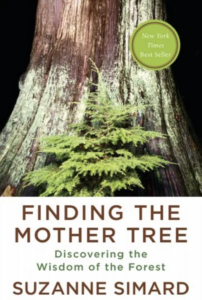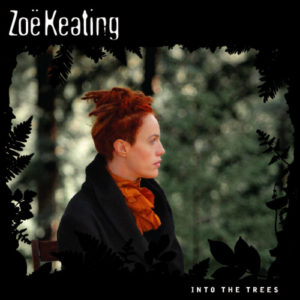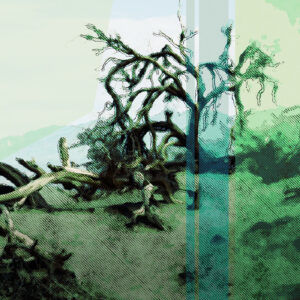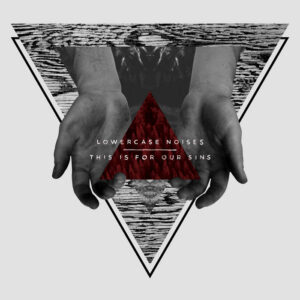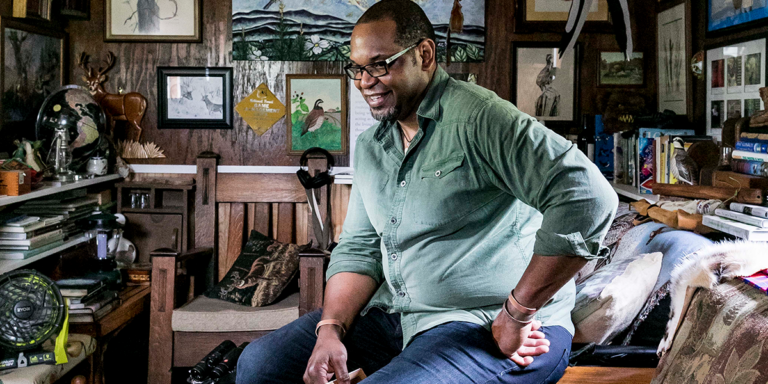Suzanne Simard
Forests Are Wired For Wisdom
Suzanne Simard is the forest ecologist who has proven, beyond doubt, that trees communicate with each other — that a forest is a single organism wired for wisdom and care. Simard found that the processes that make for a high-functioning forest mirror the maps of the human brain that we’re also just now drawing. All of this turns out to be catching up with intelligence long held in aboriginal science. She calls the mature hub trees in a forest “Mother Trees” — parenting, eldering, in a mode of mutuality and reciprocity, modeling what we also know to be true of genuinely flourishing human ecosystems.
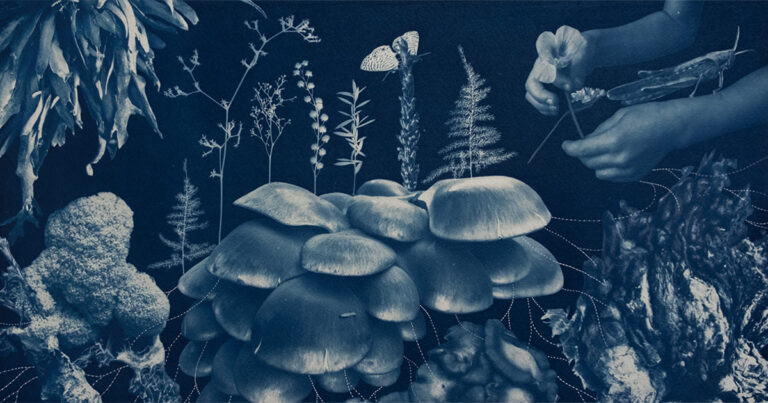
Image by Annalise Neil, © All Rights Reserved.
Guest
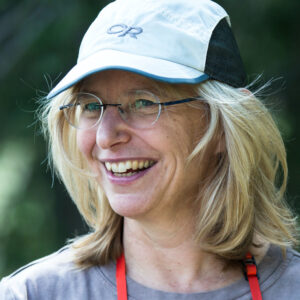
Suzanne Simard is Professor of Forest Ecology at the University of British Columbia. You can connect with her ongoing work at mothertreeproject.org. Her book is called, Finding the Mother Tree: Discovering the Wisdom of the Forest.
Transcript
Krista Tippett, host: She is the forest ecologist who has proven beyond doubt that trees communicate with each other, that a forest is a single organism, “wired,” Suzanne Simard says, “for wisdom” and for what it is hard to call anything other than care. She has shifted her field of science on its axis and was an inspiration for the central character in Richard Powers’s celebrated novel The Overstory.
But it’s the understory of a forest that Suzanne Simard brought into the light. Modern forestry had applied a logic of human societies and what our eyes could see, assumed that trees compete with each other for light and soil, and thus tore out mature trees to plant marketable young species alone and set apart. Suzanne Simard began her rigorous, groundbreaking research with three types of coexistent species: paper birch, Douglas fir, and western red cedar.
What she helped the world see next is resonant intelligence about more than trees. The processes that make for a high-functioning forest mirror the maps of the human brain that we’re also just now drawing. All of this turns out to be validating — catching up with — intelligence long held in Aboriginal science. Suzanne Simard calls the mature hub trees in a forest “mother trees” — parenting; eldering in a mode of mutuality and reciprocity; modeling what we also know to be true of genuinely flourishing human ecosystems.
[music: Zoë Keating: “Seven League Boots”]
Suzanne Simard: The most powerful parts of our social systems can be the elder that has aged and is guiding younger people or guiding their culture. And yet, they can be almost invisible in the hierarchy of our social system. In forests, the same thing; the belowground world is a perfect example of that. These bacteria, the fungi, the archaea, they’re the ones that are cycling the carbon, decomposing things, cycling nitrogen, filtering water, building soil, soil structure. And yet —
Tippett: The caregivers of the forest.
Simard: They are. They’re the fundamental foundation of the forest. They’re the legacy of the forest that helps move it forward.
Tippett: I’m Krista Tippett, and this is On Being.
[music: Zoë Keating: “Seven League Boots”]
Suzanne Simard is a professor of forest ecology at the University of British Columbia. Her TED talks have captivated millions, and now she’s released her book, Finding the Mother Tree.
You like to say that you grew up — you grew up in British Columbia. You like to say you grew up “in a province of old-growth forests.” And I just wonder, as you speak that and you feel in your body that presence, that old-growth forest, as you were a child growing up in it, what did that mean? How did you experience it then?
Simard: Well, it was all I knew. Of course, we would go away from the old-growth forests, and then I would think, “Oh, I’ve got to get back,” because it’s in my blood and bones and DNA. You know, my ancestors for many generations lived in these inland rainforests, and it’s just the way we were. And so I guess when I went away, so into the drier areas, for example, where there’s grasslands, I thought they were beautiful, too, but I always wanted to get back and felt so much at home when I was among the big, old trees.
Tippett: And there is this moment you describe with your grandfather, when you had this glimpse of what you say — call a “palette of roots and soil.” And you saw that this was the foundation of the forest. And it seems to me that, in some ways, you ended up pursuing that glimpse in what you did later as a scientist.
Simard: Yeah — you know, who I was, how I grew up, being among the trees, and of course, as a child, spending a lot of time on the forest floor, [laughs] because that’s where you are, you’re small — and building forts with my brother and sister, and rafts that we would take on the lake, it was just — the roots and the connection in the forest was just one of us. We just knew it that way.
And then, of course, when I did become a scientist, and I — a forest scientist, eventually, and I embarked on — well, I started out with an undergraduate degree, thinking I wanted to be just a forester, because I loved — I loved forestry, and my grandfather was a horse logger. And I loved what he did, and I wanted to be part of that. But what I entered into was a much different worldview and way of treating the forest, which was really not about caring for the forest, it was more about exploiting the forest.
Tippett: Right. It’s so interesting, too, because one of the things that you started to really pay attention to and illuminate are the fungi and mycorrhizae, which probably is — is this what you saw with your grandfather there, when you were young? It’s what you were looking at without having a name for?
Simard: I mean, I was aware of mushrooms in the forest, [laughs] especially when — everybody, we see these, and they’re so magical and mystical and colorful, and it’s a special part of the forest. But I didn’t really understand, as a child, what they did in the forest. I just knew they were a part of the forest, an integral part of the forest.
Tippett: And it’s fascinating, as I also learned from you, that this kind of Darwinian approach to forest management only focused on fungi that are pathogens. And that is a reality, but not — what you saw is this fungus root — that under a single footstep, there could be hundreds of [laughs] kilometers of, how do you say, mycelium?
Simard: Mycelium.
Tippett: Mycelium. It was so much more complex, again, than the thing growing aboveground that our eyes could perceive.
Simard: Yeah, so you’re right, foresters were very much focused on the pathogens, because they kill trees. And there was huge efforts to get them — to reduce that mortality due to pathogens, and these kind of crazy forest practices where, if there was this one pathogen, Armillaria ostoyae, the practice was to pull the stumps out of the soil — literally take these huge machines and rip these stumps out of the soil so the roots were exposed, killing the pathogens, which just is a really good example of the extent that we would go to in order to create these so-called productive environments for trees to grow and for stands to be fully — what we call “fully stocked” with fast-growing crop trees.
Tippett: You also came to — so there’s this web of vitality that we hadn’t been able to understand. And you also — you use the language of conversation, of the trees talking to each other. And I loved — there’s a moment in the book, Finding the Mother Tree, where you tell the story of the first time — and you’re using this language, but I want you to open this up for us — that you first “listened to” a fir tree, that you heard it with a Geiger counter. So what were you hearing?
Simard: Yeah, so we’d done this experiment where we grew these 80 triplicates of birch, fir, and cedar. And just building on the story, that birch was considered, and still is, a competitor in forests, a weed, even though it’s a natural part of succession. After disturbances, birch and aspen and cottonwoods, they come back, right, and they’re like the healing process of a disturbed forest. But foresters viewed them as unnecessary competitors and had launched an all-out war on trying to get rid of these deciduous trees. And that war is still going on to this very day, creating policies and practices that support that.
And what I wanted to know was whether they really were competitors with Douglas fir and cedar or if they had a more sophisticated relationship. So I did this preliminary work, and I discovered — I knew that Douglas fir and paper birch shared these mycorrhizal fungi, these species in common, and actually, potentially linked them together. And I was building on earlier research done in the UK in the laboratory, where David Reed and his colleagues had found that pines grown in little clear plastic root boxes in the lab, that when they were connected — they could be connected by a mycorrhizal fungus, and that when he labeled one seedling with radioactive CO2, he could trace it going to another one.
So I kind of used that same approach. I thought, does this happen in real forests? And so yeah, so what I did is I — to find out if this network existed and whether or not — what was it doing? Was it facilitating any kind of relationship between paper birch and Douglas fir? And so I labeled paper birch with radioactive carbon dioxide. That means I put a plastic bag over the shoot, and I injected radioactive CO2, and I let the birch photosynthesize for a couple of hours, taking up that radioactive CO2.
Tippett: Just a couple of hours?
Simard: Just a couple of hours.
Tippett: That’s all it took.
Simard: That’s all it took. And then with the Douglas fir, I labeled it with a different isotope, a stable isotope that doesn’t decay over time; it’s not radioactive. So then I could distinguish if these carbon molecules were going back and forth between these two species. And so I did — I labeled it for two hours, as well, put a plastic bag over Douglas fir, injected the C-13, CO2, and then came back six days later with my Geiger counter.
And the first thing was: did the labeling work? Was I able to label the paper birch with the radioactivity? So I held the Geiger counter up to it, and sure enough, it just went wild. It was crackling like crazy. It had worked, right? I had totally made this paper birch hot. And so then I went over to the Douglas fir, and I held the Geiger counter up to it, and there was a faint crackle. And that’s when I knew. I knew that they were sharing carbon, which was mind-blowing.
[music: “Cornicob” by Blue Dot Sessions]Tippett: I’m Krista Tippett, and this is On Being, today with the groundbreaking forest ecologist Suzanne Simard.
[music: “Cornicob” by Blue Dot Sessions]
All the way through the book — and this is the discipline of science, right — you raise a question, and then you pursue it. And so your question here was: how were paper birch and Douglas fir communicating? And it turns out they were conversing not only in the language of carbon, so that the language in which they were conversing, as you found, is in carbon and nitrogen and phosphorus and water and defense signals and chemicals and hormones.
In 1997, you publish this Nature article, which — well, first of all it was rejected. And you went back and rewrote it, and I get the feeling that you did not expect that they would put it on the cover. [laughs] They put it on the cover, correct?
Simard: They did, yes.
Tippett: And that it would catapult you into visibility — and not surprisingly, because you were saying things people hadn’t said before in this way, and you were a woman in a male-dominated field and — fields, probably; forestry as well as science. And you — there’d been a lot of resistance. But you published this work, and — did you use the language of “wood-wide web” or did someone else, or did Nature say that?
Simard: That was Nature.
Tippett: [laughs] Nature said.
Simard: Yeah, they put that on the front cover, with a picture of these diverse forests with all these different tree species.
Tippett: Do you like that little shorthand?
Simard: I do. I mean, I think the “wood” part is quite utilitarian, but it’s catchy. And it’s become almost like a meme now, and — which has been highly effective in helping people think about the forest in a different way. And it was also at the same time that we — people had just discovered the worldwide web, right? 1992, right? [laughs] So it was — yeah, it was actually — it was great.
Tippett: So what they were picking up on was this imagery of the forest having nodes and links, right, like the internet. And that’s in there. I also feel like what you are describing is something more alive, [laughs] more — well, it was more biological than the internet, right? I mean, you were talking about these nodes that are hub trees that you call mother trees, and that the forest is not just wired, but wired for wisdom and care.
Simard: And actually, when the Nature paper was published, we didn’t know what the pattern of the network looked like belowground. That, actually, that work came quite a bit later. And I’ll explain why. Eventually, in — about ten years later, I was getting really worn down by the reviews of my work and also just the state of the science. We were — scientists were just kind of wringing their hands over whether this network existed, because you can’t see it very well with your own eyes. It’s belowground. These fungal mycelium are — some of them are invisible to the eye.
And then there was just a lot of distrust about this communication going on or this collaboration, because we were so heavily steeped in the idea that trees only compete. And so there was a great handwringing over whether or not this actually helped the plants or helped the fungi. And so I got a grad student, Kevin Beiler, and we decided to map what that network looked like. What emerged out of that mapping, these hubs and nodes and links and mother trees, which [laughs] has got a story unto itself.
Tippett: Well, say some more. Say some more.
Simard: Yeah, so when we did this — so I felt like, we’ve got to move this field forward or it’s going to die. [laughs] It’s going to mired in having to prove the same things over and over again. And so I picked a forest that is a Douglas fir forest, an interior Douglas fir forest in British Columbia. These are drier forests that are what we call “uneven aged,” in forestry language. That means that you have big, old trees, but you have lots of young trees, too. They grow up underneath the shade in a canopy of the old trees. It’s kind of a self-regenerating forest. And so it’s got multiple ages.
And so just to give context: so in this forest, we estimated about 100 species of fungi, in these little patches of forest, that were mycorrhizal fungi. We looked at two sister species of one fungal species, Rhizopogon. So we looked at a tiny, tiny fraction. And what we found [laughs] was that every tree was connected to every other tree by these two sister species of this one species alone. Can you imagine if we’d mapped all 100? It would’ve been like, incredible.
Tippett: [laughs] Right. Right.
Simard: So every tree is linked to every other tree. All the little trees — the seedlings, the saplings are all linked into the networks that these old trees had established through their lifetime, and that the biggest, oldest trees were the hubs of the network. They were the nuclei. They were what everything else was linked into. And they were linked to each other, these other, smaller nodes, as well. But the biggest linkers were these big, old trees.
And that’s kind of — it makes sense, because the big old trees have big root systems. They’ve got many points of contact. And they have great big photosynthetic crowns that basically transmit energy into the ground that feeds the network. And so the interpretation was that these seedlings, the seedlings, the young regeneration had regenerated within the network of the old trees. So basically, they germinated, their little root systems developed, linked into the network of the old trees within a month or two, and they started to get subsidies directly from the old trees: carbon and nitrogen — and water, which we found out later — and they also benefited from just this vast mycelium that was just, like, like an iceberg, right? [laughs] It was huge. And so they were — immediately had a head start and could survive in this otherwise fairly dark forest, where photosynthetic rates were really, really low, with their tiny little needles. There’s no way they could’ve survived without these subsidies.
Tippett: Right. Well, and it’s so interesting, too, because you were — you were becoming a mother yourself, in these years of your research. I mean, you — let’s be clear. You had to be so rigorous in your science, right, to be taken seriously. So you don’t make these — you don’t use these metaphors lightly or carelessly.
Simard: No; not at all.
Tippett: And at the same time, some of the qualities that you describe, some of the things that these mother trees do, absolutely mirror the intelligence that human beings possess in mothering, parenting, and eldering, right: passing wisdom on, sending warning signals, aiding others through sickness and distress, delivering nutrients. [laughs]
Simard: Yes. No, you’ve hit on exactly kind of the struggle, as a young scientist trying to establish their credibility in this very competitive and critical field [laughs] and using the language that was only accepted at the time. If you didn’t do that, you would be tossed to the dogs. [laughs] And I never even considered, as a 30-year-old, or as I was developing my creds, of ever using language like mother trees or communication. I knew I would get tossed to the dogs. And so it was with a great deal of trepidation, to use this language, and I am getting a lot of backlash over it, especially since the book has been published, but —
Tippett: Oh, you are, again, now — still?
Simard: Yes, I am. But to me, we’re at the point where we have to — I feel, you know — I felt it was really important. We’ve got to move beyond this, right? We’ve got to embrace our place in nature as one with nature and that these trees, they evolved long before we did, and these networks — for example, the biological neural networks which we’ve found, they exist throughout nature. These patterns exist throughout nature, because they’re efficient at moving stuff around, at communication, and they’re resilient. And they’re meant to help us be reproductive societies.
Tippett: Well, right. And as you say, we are of nature. We’re not separate. And also, it feels important to me that — and I don’t see people pointing this out, when they talk about your work — that the larger context, one of the larger contexts of this is that there is, within the field of evolutionary biology, our generation of science and humanity is growing up and complicating and deepening that idea. But evolutionary biology in its many fields has been tempering and complicating and qualifying this idea that competition alone is the primary engine of evolution, and that a human superpower is cooperation; that that leads to flourishing groups and the flourishing of our species. And the language you used, of the qualities of the forest, of reciprocity and mutuality, are also qualities of high-functioning humans. And that’s a scientific observation in our generation.
Simard: Yes. Social systems, human social systems — you know, ecosystems, they’re built fundamentally in similar ways. They’re what scientists are now calling complex adaptive systems. And that complexity has a pattern, and that pattern is highly evolved. And then how that system works, like through these networks, whether you’re in a human social network or a fungal network in the forest, it’s evolved to, basically, to propagate species, [laughs] which I don’t disagree with Darwinianism in that way, in that, yes, species want to survive and reproduce, but the way they do it is much more sophisticated than we’ve thought about or that we’ve developed our science based on. But even now, it’s becoming more mainstream, known, that endosymbiosis has been highly important in collaboration and cooperation.
Tippett: That was — I think — was that the term that Lynn Margulis initially coined — the endosymbiosis? So describe what that is.
Simard: Yeah, so that’s — in the evolution of eukaryotic cells — and prokaryotic cells, as well — what we’ve discovered now, or scientists have discovered, is that it really — that evolution involved the engulfing of one organism of another, and that led to the development of organelles like mitochondria. Now we know that it’s not just the evolution of a species by itself. And so that endosymbiosis means it’s a symbiosis. They live together, that’s what symbiosis means. “Endo-” means, like, the engulfing and creating the eukaryotic cell with a nucleus and ribosomes and all the other organelles that are really an evolution of this collaboration, this cooperation, and even in the human genome, as we’ve discovered that, that we are full of DNA that is from other organisms — viruses and bacteria, and … So now it’s actually accepted that this is, you know, this has been fundamental to evolution. But it did take a long time, and I think Lynn Margulis took a lot of heat [laughs] for her ideas.
Tippett: She did. Like you, she was ridiculed for a long time. And I — you know, it seems to me that — just as we’re speaking, it seems to me the kind of catchphrase, the soundbite of Darwinianism has been survival of the fittest. But what you have been looking at in the forest and what I feel like more of our attention, including scientific attention, is going towards now is: what is the nature of vitality and flourishing, not mere survival?
Simard: That’s such a great point, you know. I mean, a fit organism puts on biomass, right? They grow. They flourish. They don’t just merely survive. And I’m really glad that you brought that up, because when we manage ecosystems — when I look at forestry practices or agriculture practices or fishing, it’s like we manage them just to survive. We don’t manage them to flourish. We push them to the brink of collapse, right — take as much as we possibly can. And I think, yeah, I think we need to step away and look at how all interrelated the science is with this management and what shape we’re in right now, the trajectory that we’re on. These things are all connected together.
[music: “Bivly” by Blue Dot Sessions]
Tippett: After a short break, more with Suzanne Simard.
[music: “Bivly” by Blue Dot Sessions]
I’m Krista Tippett, and this is On Being. Today I’m with the forest ecologist Suzanne Simard. Her research has shown that a forest is a single living organism, and this is transforming our scientific and cultural understanding of trees. She was an inspiration for the scientist at the center of Richard Powers’s celebrated novel The Overstory. But a conversation with her also sheds light on the vitality of the living system that is a human family or society. Her book is called Finding the Mother Tree.
One of the things you saw, have seen in the forest, is that the chemicals that are being transmitted are identical to our neurotransmitters; that these processes that we’ve only recently been able to map in the human brain, it sounds like it’s the same process, or it’s a kindred process to that.
Simard: They have similarities it is hard to ignore. [laughs] So yeah, I mean, when I did my studies with my students, we were — we were looking at carbon and nitrogen and water and how it’s moving between plants, and then looking at the stoichiometry of these chemicals, these elements moving together. And I realized the stoichiometry was the same as glutamate — you know, of carbon and nitrogen. And I’m just like, Oh. You know? [laughs] It’s glutamate that’s moving through these; or is it?
Tippett: And say what glutamate is.
Simard: Glutamate is an amino acid. It’s got carbon and nitrogen in it, and it happens to also be one of our neurotransmitters.
Tippett: Yeah, so it’s essential in our bodies, as well.
Simard: Yes. And so I — you know how, as scientists, they have their scales that they work at? I do cross scales, but I don’t really cross into the scale of what the molecules are. I go from the forest down to these — to networks, but I have to rely on other scientists to do that more molecular, detailed, biochemical work. And so other people had discovered that glutamate was one of the main amino acids that actually moves through networks.
Tippett: Yeah, it’s fascinating. And — and — something that you also, along the way, realized is that this way of seeing and redefining what feels like discovery to us and is being discovered and kind of named, in terms of scientific — in scientific vocabulary, is actually, in some ways, you could say that it’s modern science joining, meeting intelligence that has been there in traditional societies and Aboriginal societies. So there have been humans who understood; didn’t have this particular language. But that’s also a conversation you’ve been having kind of around the edges of your own research. Is that correct?
Simard: It is. You know, I’ve had such great fortune to, in the last decade, to work with Aboriginal scientists and Aboriginal people. I got a postdoc, Dr. Teresa Ryan, who is a salmon fishery scientist, and I’d been struggling so much in this Western science sphere, with my colleagues and publishing my work and fighting to get the interpretations accepted of collaboration and wholeness of the ecosystems. And I just started talking to her, and she’s like, “Well, our worldview is that we are part of these ecosystems; that we are all connected together, we can’t be separated from each other, and that yeah, collaboration is all part of it; that the world is an entwined place.” And she even showed me this oral history and writings by a man, subiyay, Bruce Miller of the Skokomish Nation, and he had written about these fungal networks in the soil — and that was before these discoveries — and how his people had known about these networks and how it kept the forest strong for millennia. And I’m like, oh my God, we’ve been so narrowly focused on reductionist science, pulling things apart and then trying to understand them, that we lost our way to actually see these as whole systems.
And so I felt so, suddenly, accepted, you know? I felt like, I belong again. I don’t feel like I’m going to get — my science is going to be …
Now I need to get on track with really moving it forward and not fighting, you know, fighting the criticism. I need to just move forward. And yeah, that was such a blessing for me. It’s just opened up my whole world. And now I’m working a lot with Aboriginal people and just opening up how do we work together, and viewing — you know, Western science is really just the little sister to Aboriginal science, which has been going on for millennia.
Tippett: [laughs] Right — for so much longer. There was someplace, also, you’d been talking about some of your newer work near the end of the book, about understanding the connection between fish and rivers and inland forests and that that’s also a connection that has long been made in these other bodies of intelligence and practice.
Simard: Yeah. So I’m working with the Heiltsuk Nation, which is in the Mid-Coast region of British Columbia. And the Heiltsuk have a large, large territory. They’re actually a combination of many nations — but that’s another story. But so we work with the Heiltsuk Nation in going to a number of watersheds that had different salmon runs. And this is a long, long story, [laughs] but basically what we were after is, we wanted to understand the role of salmon in forest productivity, and building on work of the Aboriginal people who knew about these connections between salmon, trees, and themselves, and also some earlier Western science that had made discoveries that salmon nitrogen was inside of trees and plants and insects. And so we wanted to know what was the pathway —
Tippett: So amazing.
Simard: Yeah, it is absolutely amazing. [laughs] So we were embarking on what is the pathway? How does the salmon get into these trees? And so that’s — yeah, we’ve been unraveling that story.
Tippett: Yeah, that’s amazing. Something that you often have been fascinated and amazed by is also the self-healing properties of the forest and that these are regenerative systems. In your book, you really do also — like the best books, I think, you’re telling multiple stories together; and so the story of the science unfolding, the understanding unfolding, and also what you were living through as a human being. And you did have cancer. And the way I think of this is not anthropomorphizing, but actually applying — letting different kinds of intelligence be in a reciprocal relationship, right? So you experienced — you know, somewhere you said about yourself, you started to understand that we are made for recovery and that there were echoes there with the regenerative system that is a forest that you were studying and living in. Can you say a little bit about that?
Simard: Yeah, that was an incredible learning moment for me, in a very personal and visceral way. I mean, I was — I got breast cancer. It wasn’t great. It had spread to my lymph nodes. You know, I was facing death. And I had to really embrace all that I could to survive. My kids were 10 and 12 at the time, or 12 and 14. And I needed to be there for them, and I was worried that I might not be. And I had to do anything I could. And I learned — you know, I actually learned from my doctors, I learned from my friends, all the other women going through chemo, my family. And we all — you know, we came together as a — [laughs] as a system, really, as a group that, you know, we were helping each other.
Just as an example, my — I call them my BFFs, my “breastless friends forever” — we all lost our breasts. And we all went through chemo together; it was really, really hard. And the way we supported each other by just being there, always. And still, today, almost ten years later, these are some of my best friends, and we’re constantly in contact. And it’s like the network, right? It’s a reinforcing, resilient network. It’s regenerative. It helps you be happy and healthy. And you know, in the forest, that’s how forests regenerate, as we talked about, how seedlings establish within the network of this collaborative system; you know, the old trees, they’re nurturing them and bringing them up. And this is exactly how our own social systems work and what keeps us healthy and alive and productive and happy, too.
[music: “This Is For Our Sins” by Andy Othling]
Tippett: I’m Krista Tippett, and this is On Being, today with the groundbreaking forest ecologist Suzanne Simard.
[music: “This Is For Our Sins” by Andy Othling]
I’m fascinated with the language of ecosystem and just — you know, it’s about — that word is about 100 years old in our vocabulary, and strangely, I think it takes about a century for some really tectonic shift in understanding to start to penetrate. I mean, just like Einstein completely reframed the nature of time, but we’re still living in this clockwork world, because [laughs] we haven’t caught up yet. And it does feel to me like ecosystem is a total reframing, and we’re just catching up in all these ways we’ve been talking about and learning about the ecosystem in our bodies and, as you said, with new, cutting-edge scientific tools, seeing the ecosystem in something like a forest.
I just want to read something you wrote, just this incredible passage from your book:“We can think of an ecosystem of wolves, caribou, trees and fungi creating biodiversity just as an orchestra of woodwind, brass, percussion and string musicians assemble into a symphony. Or how our brains, composed of neurons, axons and neurotransmitters, produce thought and compassion. Or the way brothers and sisters join to overcome a trauma like illness or death — the whole greater than the sum of the parts.”
I kept thinking, when I was reading you, about a conversation I was in a few years ago with a bunch of people who were in their 20s. And there was a breakout group, and the title of it was “Communal Scaling.” Communal scaling would be about vulnerabilities and resilience getting interconnected. It would mean that everything wouldn’t just get bigger and bigger. There would be things that got smaller, there would be things that died, and their learnings would be incorporated into the ongoing vitality. In some ways I look back at that, and I think about how the intelligence and the vision in that conversation was — is very much reflected in what you’ve learned about how forest ecosystems work.
Simard: Yeah. I mean, forests are really dynamic places, just like our own societies. And it does involve death, it involves pulling back, it involves learning, or redirecting your resources, sometimes, to learn something new — so it’s not always about growth. It’s not always about becoming bigger and better in a traditional or a visible way that we might measure as wealth, for example, or power. You know, the most powerful parts of our social systems can be the elder that has aged and is guiding younger people, or guiding their culture. And yet, they can be almost invisible in the hierarchy of our social system.
In forests, the same thing. The belowground world is like a perfect example of that. We don’t see it, we don’t necessarily, unless you’re looking belowground. And here it’s doing all the fundamental work, right? These bacteria, the fungi, the archaea, they’re the ones that are cycling the carbon, decomposing things, cycling nitrogen, filtering water, building soil, soil structure. And yet —
Tippett: The caregivers of the forest.
Simard: They are. They’re the fundamental foundation of the forest. They’re the legacy of the forest that helps move it forward.
Tippett: There’s this very quiet — there are these quiet sentences that I just want to put back — from you again: “There is a necessary wisdom in the give-and-take of nature, its quiet agreements and search for balance. There is an extraordinary generosity.”
Simard: Yeah. You know, species, they don’t live in isolation. It is a world of give-and-take. It is a relationship of silent agreements between species. We all need each other, to create these healthy systems. You know, it — yeah, I can’t emphasize that enough, that the community, the ecosystem is a complex place. And it’s about working together. It’s not just about the parts. They are more than the sum of the parts.
Tippett: Yeah, and there’s a way that that just lands, at least in some of us, as common sense, which is also fascinating, because given how much [laughs] rigorous work you had to do to be able to formulate those ideas inside the field.
Simard: Yeah, I mean, maybe we’ll look back on this period and go, what were we thinking? [laughs] But it’s pervasive, right? Like agriculture — look at agriculture. It’s going through transformations away from industrial, high-input agriculture to more regenerative agriculture. And some systems are almost irretrievable, now that we’ve hammered them so hard with this kind of thinking; like, for example, the crash of our salmon populations. We need to really regenerate these systems and change our thinking so that they can be healthy again.
Tippett: I want to ask you a couple of less serious questions, just things I’m really curious about, but I suspect they might be related to this. So in the book, you have a lot of wonderful photographs, starting with photographs when you were a child with your family, and all the way through. Something that you do in here, and I just think there must be a reason for it, is — you know, often when you have a picture, when we show photographs, we’ll name the ages of children, right? So here’s the first one in the book, I think. It’s your siblings and your mother, and you say, “Kelly, 3; Robyn, 7; and mom, Ellen June, 29. I’m 5.” And then all the way through the book, you name the ages of all the adults, right? So it’s not just the 5-year-old, it’s the 89-year-old. And there’s something — it just — it made me sit up and think about the generations in a different way. And anyway, is there a reason that you did that?
Simard: Well, I wanted to tell the story of how my life was so essential to the questions I asked in my science. And I wanted to tell that story in a way that people could understand and follow; make it simple and so you could trace what was happening. I wanted people to realize that this scientific endeavor was really a life lived. And it wasn’t just my life, it was generations that came before me and the generations that come after me; we’re all linked together. And I felt that that might help people to see that line, if you want to call it a line — it’s not really a line, it’s kind of a cycle. But yeah, I felt like it was a good touchpoint, a touchstone for people to really grasp the development of the story.
Tippett: A word that you use a lot in your writing and when you’re talking about the work you’re doing is “humus.” You say it that way, right?
Simard: Yes.
Tippett: At some point in the last couple of years — I think it was after I read Andrea Wulf’s book The Invention of Nature, about Alexander von Humboldt. I don’t know if you read that.
Simard: I haven’t.
Tippett: But it’s really about the trajectory of, you know, going from natural philosophy, where science saw itself as — it was multidisciplinary and connected to all kinds of other disciplines that we don’t consider to be science now. And anyway, that language of humus, and I started thinking how interesting it was that the root of “humus” and “human” and also “humor” — [laughs] how those three words are so — and there was this line of Henry David Thoreau, in Walden: “Shall I not have intelligence with the earth? Am I not partly leaves and vegetable mould” — which is, I guess, another way to talk about humus — “myself?” I don’t know. I’ve never had anybody to talk to about that with. But … [laughs]
Simard: No, I mean, that’s really brilliant of you. Those root words are, you know — [laughs] it’s connected together. The humus is the foundation of the forest. It’s where the decay happens. It’s where the nutrients are. It’s where most of the carbon in the soil is. It’s an absolutely fundamental part of the being of the forest. And humor, [laughs] for example, is — that is also our, what makes us fundamentally happy and interesting people and gives us — makes us relax and enjoy our lives; happiness; to be human. [laughs] And I love that you’ve made that linkage together. That is brilliant. I love it.
Tippett: [laughs] Oh, OK. Well, thank you. I’m happy to discuss it with someone.
I mean, if I ask you, through this life, this professional life, but also a human life that you’ve spent in the forest, with the forest — not just with the forest, but that as your passionate focus, how would you talk about how that has shaped and evolved, and maybe right now, today, continues to evolve your understanding of what it means to be human?
Simard: Yeah. I think that we all kind of struggle with that, right? That’s kind of our life’s work, is to understand, what is it to be human? What is the meaning of my life? And we go through these changes, these dramatic changes at different points in our life, and I think, as a child, I didn’t really think about it that much, other than that I just loved — [laughs] I just loved this place that was my home, which was the forest. And then I went through all of these incredible journeys of — and not always fun, right — like a lot of difficulty, a lot of frustration and second-guessing myself and — and yet, out of it, I’ve grown into a more whole person, myself. And maybe I’m back to where I was as a kid, right — like, to enjoy, just be happy with this whole life that I have.
Tippett: And you have such a good cheer, I would say both in spite of and because of what you see — the intelligence of nature, the innate intelligence we have the capacity to possess. You’ve said the forest is wired for wisdom, which is such an intriguing idea. I mean, do you — and I know, I mean, there you are in British Columbia, and we’re speaking — we’re speaking in a time in which fires and the consequences of living the way we’ve been living are really coming home, are intensifying. But I feel like you hold onto all the complexity; you also hold onto this capacity for regeneration and self-healing that you’ve seen. And you said forests are wired for wisdom, and I feel like you also think we are, although it’s not necessarily the destination. I don’t know.
Simard: Yeah. You know, I’ve learned through my work, in studying how systems work, that they are regenerative systems. You know, they’re built that way. They’ve evolved that way — that the old help the young, that the large helps the small, and it’s reciprocal, and that this network, this system, will grow. And out of it emerges incredible stuff, like the ability to sequester carbon in our ecosystems, for example; the productivity of a beautiful cathedral forest; the sense of wonder and health and vitality and health you get — that we get when we interact with that incredible place. You know, even in our own societies, look at what we’ve achieved, and look at the joy we’ve developed, listening to the symphony, watching our children grow. It’s just full of joy.
And we’re built for that. And that’s what gives me incredible hope, and honestly, hope is the only way to go, right? And it’s also — that hope is based on understanding. It’s an understanding that our ecosystems are meant to heal themselves, and yes, there are tipping points, and yes, we do — if we don’t make changes, they can collapse, but they can also go the other direction. The system will respond, if we make those choices, and it will rebuild and re-self-organize again in a way that is going to be healthy for maybe even the human population, the human society, right? I think it’s all there. We have all the tools. We have all the fundamental building blocks. We just need to make the right — make good decisions.
Tippett: We have to re-self-organize, as well. [laughs]
Simard: We do.
Tippett: We have to get regenerative, too. [laughs]
Simard: We do. We have to [laughs] re-self-organize. But we’re doing it. We see it. There’s hope everywhere.
[music: “Lakal” by Blue Dot Sessions]
Tippett: Suzanne Simard is Professor of Forest Ecology at the University of British Columbia. You can connect with her ongoing work at mothertreeproject.org. Her book is called Finding the Mother Tree: Discovering the Wisdom of the Forest.
[music: “Lakal” by Blue Dot Sessions]
The On Being Project is: Chris Heagle, Laurén Drommerhausen, Erin Colasacco, Eddie Gonzalez, Lilian Vo, Lucas Johnson, Suzette Burley, Zack Rose, Colleen Scheck, Julie Siple, Gretchen Honnold, Jhaleh Akhavan, Pádraig Ó Tuama, Ben Katt, Gautam Srikishan, Lillie Benowitz, April Adamson, Ashley Her, and Matt Martinez.
The On Being Project is located on Dakota land. Our lovely theme music is provided and composed by Zoë Keating. And the last voice that you hear singing at the end of our show is Cameron Kinghorn.
On Being is an independent, nonprofit production of The On Being Project. It is distributed to public radio stations by WNYC Studios. I created this show at American Public Media.
Our funding partners include:
The Fetzer Institute, helping to build the spiritual foundation for a loving world. Find them at fetzer.org;
Kalliopeia Foundation, dedicated to reconnecting ecology, culture, and spirituality, supporting organizations and initiatives that uphold a sacred relationship with life on Earth. Learn more at kalliopeia.org;
The Osprey Foundation, a catalyst for empowered, healthy, and fulfilled lives;
The Lilly Endowment, an Indianapolis-based, private family foundation dedicated to its founders’ interests in religion, community development, and education;
And the Ford Foundation, working to strengthen democratic values, reduce poverty and injustice, promote international cooperation, and advance human achievement worldwide.
Books & Music
Recommended Reading
The On Being Project is an affiliate partner of Bookshop.org and Amazon.com. Any earnings we receive through these affiliate partnerships go into directly supporting The On Being Project.





